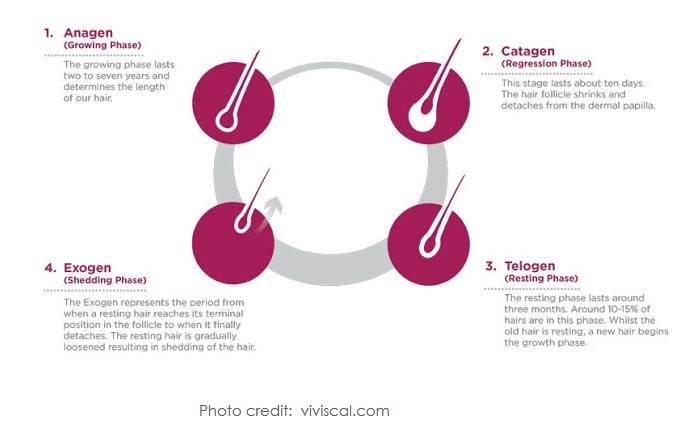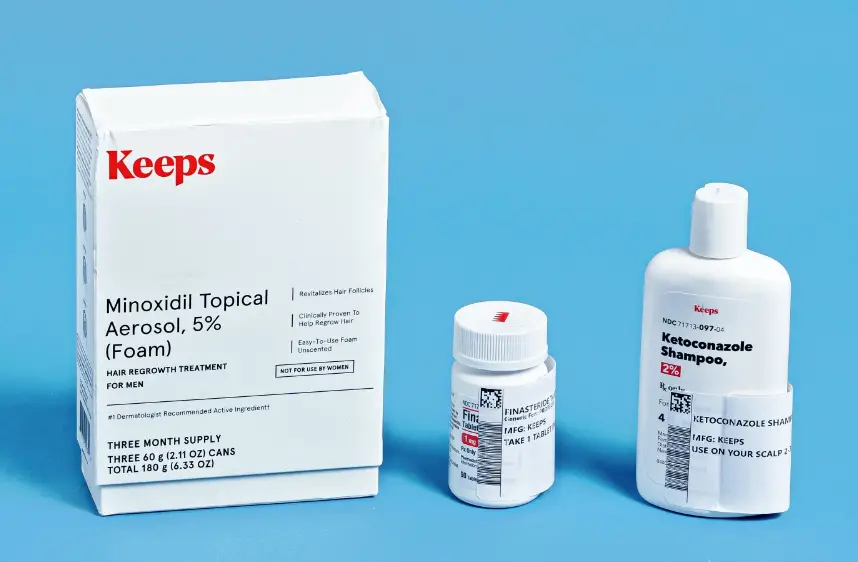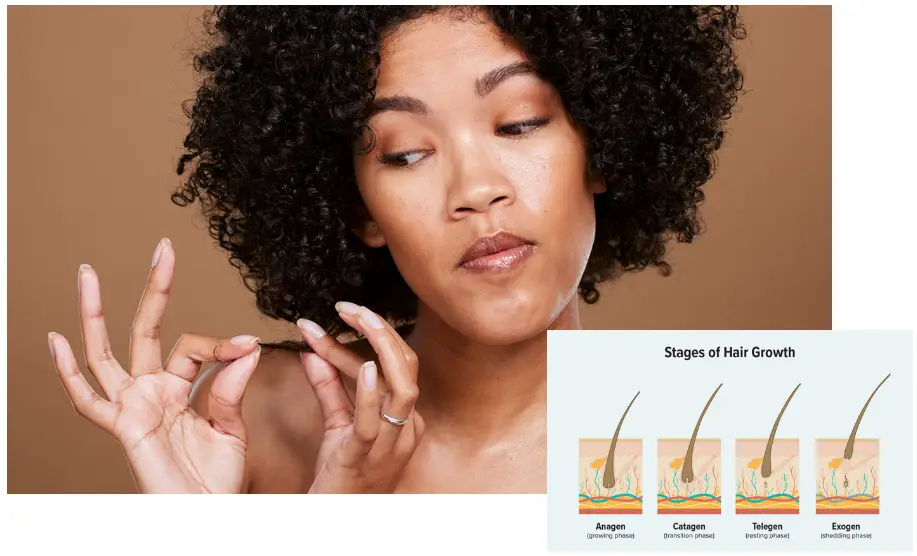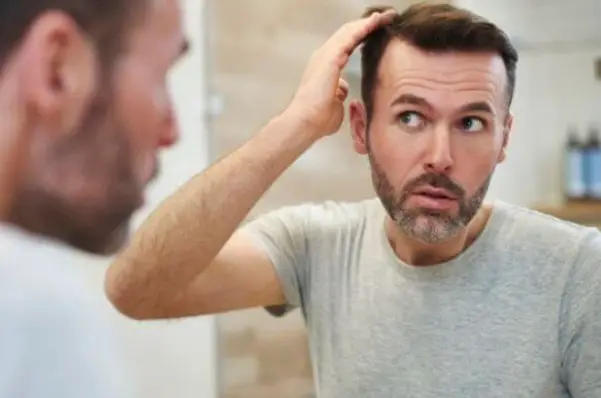Does your hair go through stages of falling out? Discover the science behind hair growth and loss, and learn how to maintain hair health through all four stages to prevent hair loss effectively.
In a world where luscious locks are often equated with vitality and beauty, the sight of hair strands on the bathroom floor can be alarming. The question that often haunts people is, “Does Your Hair Go Through Stages of Falling Out?” Understanding this phenomenon is not just a matter of cosmetic concern but also a crucial aspect of overall health.
The importance of understanding hair growth cycles cannot be overstated. Hair doesn’t just grow and fall out randomly; it follows a specific cycle that includes various stages such as Anagen (the growing phase), Catagen (the transition phase), Telogen (the resting phase), and Exogen (the shedding phase). Knowing these stages can help individuals identify if their hair loss is a natural process or a sign of an underlying issue. It can also guide them in choosing the right treatments and preventive measures, whether they are dealing with Androgenetic Alopecia, Telogen Effluvium, or other forms of hair loss.
In this comprehensive guide, readers can expect to delve deep into the science behind hair growth and loss. They will learn how to distinguish between the different phases of hair growth, how various factors like stress and diet can impact these stages, and what treatments are most effective for different types of hair loss. For those who are keen on natural remedies, there will be a section dedicated to holistic approaches to maintaining hair health. Discover the natural stages of hair growth or find out if hair shedding means hair loss by exploring our in-depth articles.
So, if you’ve ever found yourself fretting about hair growth cycle time, or wondering “how to regain hair loss from stress“, this article is your go-to resource. Don’t just worry about the strands in your comb; take action to understand your hair better and give it the care it deserves. Ready to take the first step towards healthier hair? Let’s dive in!

Does your hair go through stages of falling out?
Yes, your hair does go through stages of falling out, which is a natural part of the hair growth cycle. The cycle consists of four main phases: Anagen (growth), Catagen (transition), Telogen (resting), and Exogen (shedding). During the Anagen phase, your hair grows actively from the roots. The Catagen phase is a short transitional period when growth stops.
The Telogen phase is when the hair rests, and finally, the Exogen phase is when the hair falls out to make room for new growth. It’s important to note that not all hairs are in the same phase at the same time, which is why regular shedding is a normal occurrence. Understanding these stages can help you better manage hair health and address any concerns related to hair loss.
The Science Behind Hair Growth and Loss
Understanding the intricacies of hair growth and loss requires a deep dive into the biological processes that govern this cycle. It’s not just about vanity; it’s about health, well-being, and even self-esteem.
The Four Stages of Hair Growth
The journey of a hair strand is not as simple as growing and falling out. It goes through four distinct phases, each with its own set of characteristics and duration:
- Anagen: Growing Phase
During the Anagen phase, hair cells divide rapidly, contributing to new hair growth. This phase can last anywhere from 2 to 7 years, depending on genetics and other factors. - Catagen: Transition Phase
The Catagen phase is a short transitional period that lasts about 10 days. Here, the hair follicle shrinks and detaches from the dermal papilla. - Telogen: Resting Phase
In the Telogen phase, the hair follicle is at rest, and no new growth occurs. This phase lasts around three months. - Exogen: Shedding Phase
Finally, during the Exogen phase, the old hair sheds, and a new hair begins to grow, marking the start of a new Anagen phase.
How Hair Loss Affects These Stages
Hair loss is not a one-size-fits-all issue. Different types of hair loss affect the hair growth cycle in various ways:
- Androgenetic Alopecia
Commonly known as male or female pattern baldness, Androgenetic Alopecia primarily affects the Anagen phase, shortening it and leading to thinner hair strands. - Telogen Effluvium
Stress or trauma can trigger Telogen Effluvium, causing a larger number of hairs to enter the Telogen phase prematurely, resulting in increased shedding. - Anagen Effluvium
This type of hair loss occurs during the Anagen phase and is often caused by chemotherapy or other medications that inhibit hair growth.
Diagnosis and Tests
Determining the stage of your hair growth cycle can be crucial for effective treatment. Here’s how to go about it:
- How to Tell if Hair is in the Anagen Phase
A pull test or trichogram can help identify if your hair is in the Anagen phase. These tests are usually performed by a Trichologist or Dermatologist. - Symptoms and Causes
Understanding the underlying causes of hair loss involves looking at symptoms like thinning, shedding, and even changes in texture. Blood tests may also be conducted to rule out any hormonal imbalances or nutritional deficiencies.
For those who are keen to get to the root of their hair loss issues, explore our detailed guide on late-stage traction alopecia or calculate your hair growth with our hair growth calculator.
Ready to take control of your hair health? Don’t just wonder; get diagnosed and start your journey towards healthier hair today!
| Stage of Hair Growth | Diagnostic Tests | Description |
|---|---|---|
| Anagen (Growing Phase) | Pull Test, Trichogram | These tests help identify actively growing hair follicles. Usually performed by a dermatologist. |
| Catagen (Transition Phase) | Scalp Biopsy | A small section of the scalp is examined to identify the number of hairs in the Catagen phase. |
| Telogen (Resting Phase) | Telogen Effluvium Test | Examines the number of hairs in the Telogen phase to diagnose conditions like Telogen Effluvium. |
| Exogen (Shedding Phase) | Wash Test | Counts the number of shed hairs to determine if the shedding is within a normal range. |
Treatment and Management
Navigating the maze of hair loss treatments can be overwhelming. With a plethora of options ranging from medical interventions to natural remedies and specialized hair care products, finding the right solution requires a comprehensive understanding of each approach’s pros and cons.
Medical Treatments
When it comes to medical interventions for hair loss, two names often dominate the conversation: Finasteride and Minoxidil.
- Finasteride
This prescription medication primarily targets Androgenetic Alopecia by inhibiting the conversion of testosterone to dihydrotestosterone (DHT), a hormone that shrinks hair follicles. It’s usually taken in pill form and can take up to three months to show noticeable results. - Minoxidil
Available as a topical solution or foam, Minoxidil stimulates hair growth by prolonging the Anagen phase. It’s an over-the-counter medication suitable for both men and women.
 .
.
Natural Remedies
While medical treatments offer proven efficacy, natural remedies provide an alternative for those looking to avoid chemicals. Here are some key areas to focus on:
- Diet & Nutrition
A balanced diet rich in vitamins and minerals like biotin, zinc, and iron can significantly impact hair health. Foods like salmon, eggs, and leafy greens are excellent choices. - Minimize Stress
Chronic stress can lead to conditions like Telogen Effluvium, causing hair to enter the resting phase prematurely. Practices such as yoga, meditation, and regular exercise can help manage stress levels.
Hair Care Products
Choosing the right hair care products is crucial for maintaining hair health and minimizing loss. Here are some tips:
- Shampoo & Conditioner
Opt for sulfate-free shampoos and conditioners that contain natural oils and proteins. These ingredients nourish the scalp and strengthen hair strands. - Serums & Oils
Products containing ingredients like argan oil and keratin can help in strengthening hair and promoting growth.
For those who are keen to explore more about hair care, check out our comparison between Folexin and Viviscal or learn about Ludwig pattern hair loss.
Ready to take control of your hair health? Whether you’re considering medical treatments or natural remedies, the first step is always education. Dive deeper into our resources and make an informed choice today!
Note: Consider including a table here that compares the effectiveness and side effects of various hair care products.
Prevention and Maintenance
While treatment options abound for those already experiencing hair loss, prevention is always better than cure. This section delves into the proactive steps one can take to maintain a healthy mane, from lifestyle changes to a dedicated hair care routine, all backed by research and education in the field of hair loss.
Lifestyle Changes
The adage “you are what you eat” holds true even for your hair. Lifestyle changes can significantly impact the health of your tresses.
- Diet & Nutrition
A nutrient-rich diet can do wonders for your hair. Foods high in Omega-3 fatty acids, protein, and vitamin E are particularly beneficial. Incorporating foods like walnuts, flaxseeds, and avocados can promote stronger, healthier hair. - Minimize Stress
Stress is a known culprit for various health issues, including hair loss. Engaging in stress-reducing activities such as mindfulness meditation, deep-breathing exercises, and physical exercise can help in maintaining a healthy scalp and hair.

Hair Care Routine
A dedicated hair care routine is essential for maintaining the health of your hair through all its stages—Anagen, Catagen, Telogen, and Exogen.
- Regular Trimming
Trimming your hair every 6-8 weeks can prevent split ends and breakage, ensuring that the hair remains healthy during its growth phase. - Deep Conditioning
A weekly deep-conditioning treatment can provide the necessary moisture and nutrients, especially during the Telogen and Exogen phases when the hair is more prone to falling out.
Our Research and Education in Hair Loss
Our commitment to combating hair loss goes beyond products and treatments. We invest in extensive research and education to provide the most accurate and helpful information.
- Studies
Our ongoing studies focus on understanding the different types of hair loss, their causes, and effective treatments. - Customer Testimonials
Real stories from real people offer invaluable insights into the effectiveness of various treatments and products.
For those interested in diving deeper into the science of hair loss, explore our educational content on the stages of balding or calculate your hair growth with our hair growth calculator.
Ready to make hair loss a thing of the past? Equip yourself with the knowledge and tools to maintain a healthy head of hair. Start your preventive journey today!
Note: Consider including a table here that summarizes our research findings and customer testimonials for easy reference.
FAQs
The journey to understanding hair loss is often fraught with questions. This FAQ section aims to address some of the most commonly asked questions about hair loss, the anagen phase, and disruptions in the hair growth cycle.
Is my hair falling out from the root, what can I do?
One of the most alarming experiences is noticing that your hair is falling out from the root. This could be a sign of various conditions, such as Telogen Effluvium or Androgenetic Alopecia.
- Consult a Dermatologist
The first step is to consult a dermatologist for a proper diagnosis. They may perform tests like a scalp biopsy or blood tests to determine the cause. - Treatment Options
Depending on the diagnosis, treatments may range from topical solutions like Minoxidil to oral medications such as Finasteride.
Note: Consider including an Alt image of a hair strand with the root, illustrating what it looks like when hair falls out from the root.
How long does the anagen phase last?
The Anagen phase, or the growing phase of the hair cycle, varies from person to person. On average, it lasts between 2 to 7 years.
- Factors Affecting Duration
Genetics, age, and overall health can affect the duration of the Anagen phase. A shorter Anagen phase leads to shorter hair growth, while a longer one results in longer hair. - Maintaining a Healthy Anagen Phase
Proper nutrition and stress management can help prolong the Anagen phase, promoting healthier and longer hair growth.
What happens when the hair growth cycle is disrupted?
Disruptions in the hair growth cycle can lead to conditions like Telogen Effluvium, Anagen Effluvium, and even Cicatricial Alopecia.
- Symptoms
Symptoms may include excessive shedding, thinning hair, and in severe cases, bald patches. - Causes
Factors like stress, hormonal imbalances, and certain medications can disrupt the hair growth cycle.
For those who want to understand more about the intricacies of the hair growth cycle, read our comprehensive guide on natural hair growth stages or learn what hair shedding means for hair loss.
Got more questions? Don’t let uncertainty hold you back. Dive into our extensive resources and arm yourself with the knowledge to tackle hair loss head-on!
Conclusion: Understanding the Phases of Hair Loss
In the quest to answer the question, “Does your hair go through stages of falling out?”, this comprehensive guide has covered all the bases. From the science behind hair growth and loss to the various treatment options and preventive measures, the article aims to provide a 360-degree view of hair health. The journey through understanding hair loss is complex, but armed with this knowledge, you’re better equipped to tackle the issue head-on.
Whether you’re dealing with Androgenetic Alopecia, Telogen Effluvium, or simply want to maintain a healthy head of hair, understanding that your hair does go through stages of falling out is the first step in effective management and treatment.
Key Takeaways
Navigating the complexities of hair loss and growth can be overwhelming, but this comprehensive guide aims to simplify the journey. From understanding the four critical stages of hair growth—Anagen, Catagen, Telogen, and Exogen—to exploring medical treatments like Finasteride and Minoxidil, the article provides a holistic view. It also delves into natural remedies and lifestyle changes, such as optimizing Diet & Nutrition and minimizing stress, to offer a well-rounded approach to hair health.
- AI Powered Bald Filter Online 2024: See Yourself with No Hair! - January 19, 2024
- Harklinikken Bad Reviews 2024: Analyzing Negative Feedbacks - January 18, 2024
- How to Get the Alex Eubank Hair | Step-By-Step Tutorial 2024 - January 18, 2024







